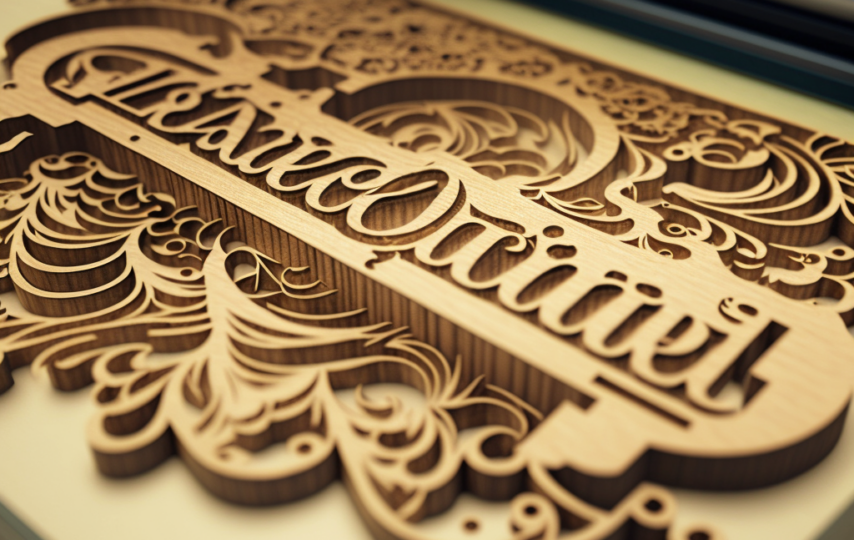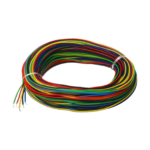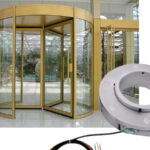I’ve always been drawn to the world of DIY projects as someone who enjoys tinkering and creating things. Starting with a blank canvas and producing a final product that you are proud of is tremendously fulfilling in all fields, from electronics to woodworking. And while there are a plethora of equipment and methods that might assist you in realizing your DIY ambitions, I’ve found laser engraving to be quite helpful.
Don’t be afraid to understand it
Laser engraving may sound difficult if you are unfamiliar with the procedure, but contemporary technology has made it surprisingly simple. In essence, it is burning or etching a design, pattern, or text onto a surface with a strong laser beam. Thin layers of material are discolored or removed by the laser beam in order to leave an etching.
Extremely precision
The advantages of laser engraving are numerous. It enables etching that is incredibly precise—down to a few thousandths of an inch, for starters. In order to guarantee straight lines, flawless curves, and accurate image reproduction, the laser adheres to a specified digital path with micron-level accuracy. Furthermore, laser engraving is adaptable and may be utilized on a variety of materials, including wood, plastic, metal, leather, fabric, and even glass. The procedure is typically the same, although each material has various requirements.
Extraordinary efficiency
Laser engraving is also effective. Software-generated designs can be instantly and automatically engraved by the machine without additional human involvement. Because of this, laser engraving is a good choice for mass production or reproducing the same design on many substrates. In comparison to conventional engraving techniques, it also means less human effort and operator error.
The machine catches my eyes
One brand of laser engraver that I’ve had the pleasure of working with is the Ortur Laser Master 3. It offered a huge engraving surface, robust power, open-source compatibility, and simplicity of usage for just $549. Once my new device arrived, I was excited to use my creative ideas to produce fun DIY projects. I can still feel the excitement of carefully opening the Ortur Laser Master 3’s well-packed box for the first time. It appeared to be well-designed, sturdy, and stylish. The frame needed to be secured with a few nuts and bolts, the laser and fans needed to be attached, and the power connections needed to be connected. I was able to simply upload drawings, pictures, and text, manage parameters like speed and intensity, and transfer files right to the engraver thanks to the software that was included with it.
My first try
I decided my first project would be engraving my name on a piece of walnut. I felt ready because I had read the guidelines and attended a few internet lessons. I opened the included laser engraving program and uploaded a picture of my name in the typeface and size I preferred. Then, in accordance with the instructions for engraving walnut wood, I had to alter a number of parameters, including power, speed, and frequency. I gently set the walnut block on the machine’s work table while taking a deep breath to calm my enthusiasm, and then I adjusted the laser head to the predetermined origin point. A few clicks later, the laser was activated, and I stared in awe as it engraved the first line of my name while also emitting a tiny puff of smoke from the wood. I could immediately see the contrast between the darker engraved lines and the walnut’s natural hue as the machine automatically engraved each letter and curve with laser-focused accuracy.
I picked up the walnut block in wonder as I watched my name appear before my eyes when the machine stopped and the laser switched off. The letters’ curves were exact and uniform, and the thickness was constant. It was a very straightforward job, but it showed me the transforming potential of laser engraving and gave me a whole new range of design, pattern, and texture options.
Unexpected possibilities
The vast variety of materials I can work with my GearBerry laser engraver is one of its most interesting features. There are numerous types of wood, including walnut, cherry, and maple; composite woods, including plywood and particleboard; various polymers, including acrylic, PETG, and nylon; metals, including aluminum, stainless steel, and brass; leather; fabric; rubber; ceramics, and glass. The list is seemingly limitless. Basically, a substance can be etched if it can survive the heat from the laser beam without igniting. And because each material engraves differently, settings like power, speed, and frequency must be adjusted. However, the effects can be astounding with experimentation and the proper conditions for that particular chemical.
My constant attempts
Reclaimed wooden artifacts that I acquire in thrift shops are one of my personal favorites to engrave. When elaborate designs, inspirational quotes, and family images are permanently etched onto the weathered surfaces of discarded picture frames, trinket boxes, and trays, they acquire a new lease on life. Rustic yet contemporary, it serves as a reminder to make use of what is currently available.
Once I was familiar with the fundamentals of my new laser engraver, I started experimenting with various materials. My fascination in engraving leather grew, and I even purchased an entire leather couch to practice on. At first, the stench of burning leather was overpowering, but I persisted and engraved designs on the cushions’ exterior and interior. Now that couch is a focal point in my living area, always drawing attention to its distinctive design.
I have started engraving a wider variety of wearables, including bags, jewelry, and clothing. You can either engrave directly onto the material, first apply a transfer sheet, or roller print ink before engraving. These are the three major procedures. When it comes to beauty, durability, and depth of detail, each technique produces a distinct kind of outcome. However, almost anything may be engraved to your preferences if you have enough time, are willing to experiment, and use the right settings on your laser engraver.
Conclusion
In retrospect, learning how to laser engrave has been one of my most fruitful hobbies. I now have a newfound appreciation for the finer points and the value of craftsmanship thanks to my ability to transform a plain surface into a work of art or a unique gift. Although I didn’t anticipate my Ortur Laser Master 3 to alter the way I perceived the world, in a way, it did. It opened my eyes to the satisfaction of making something with my own hands and the inherent joy that results from transforming a commonplace item into something special through perseverance, patience, and careful effort.








